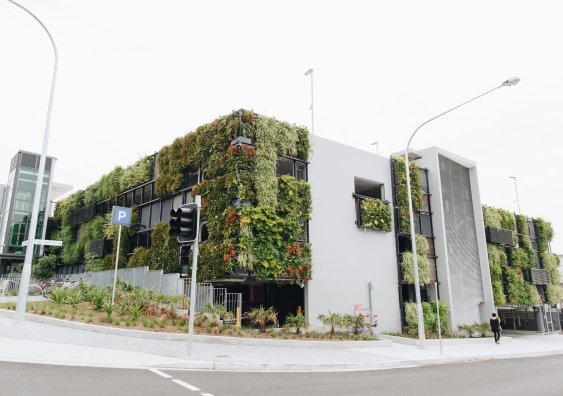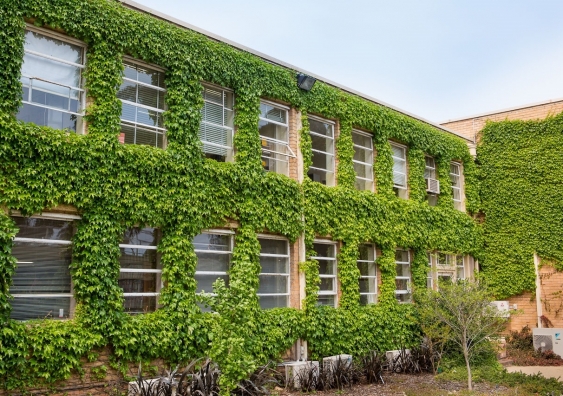Greener cities could be a key component of our COVID-19 recovery
A roadmap to fast-track flourishing green roofs, walls and facades released today could provide a job stimulus and support economic recovery.
A roadmap to fast-track flourishing green roofs, walls and facades released today could provide a job stimulus and support economic recovery.

Freya Norman
UNSW Media & Content
0422 172 552
f.norman@agsm.edu.au
Green infrastructure technologies have environmental, economic and social benefits including adapting cities to climate change, bringing nature back to cities, creating engaging and restorative places for workers and residents and, importantly, creating jobs. Unfortunately, Australian cities are lagging behind many of their international counterparts in the implementation of these green infrastructure technologies.
A collaboration of industry, government and university experts have released the Roadmap, which provides six action-based strategies to grow more plants on, and on top of, building roofs, walls and facades.
Roadmap co-author and Senior Deputy Dean of UNSW Business School, Professor Leisa Sargent, says looking toward our recovery after the coronavirus pandemic provides an opportunity to change the way we think about our living and working spaces by combining green infrastructure with grey infrastructure.
“Retrofits of this type could receive a business tax incentive to stimulate the construction industry as they create workplaces that improve employee productivity and wellbeing,” says Professor Sargent.
“Green roofs, walls and facades require a diverse mix of professions and trades to build them and many jobs will be created as the sector grows. In Toronto, a 2009 bylaw that made green roofs mandatory on large new buildings is estimated to have created 1600-plus jobs in their construction and 25 jobs annually to maintain them.”
A Roadmap for green roofs, walls and facades in Australia’s urban landscapes 2020-2030 was compiled by UNSW Sydney and University of Melbourne researchers with funding from HORT Innovation and draws on the collective knowledge of over 60 experts in the building and horticultural industries, government agencies and universities.
Key recommendations include establishing an industry Knowledge Hub, government leadership, policies combining incentives and regulation, and education and advocacy to ensure standards in design, installation and maintenance.

Experts have released the Roadmap, which provides six action-based strategies to grow more plants on, and on top of, building roofs, walls and facades. Image: University of Melbourne
Associate Professor Nick Williams, from the University of Melbourne and Roadmap co-author, says the City of Melbourne is an example of government that promotes green cities and is tailoring policies to encourage green infrastructure via a planning scheme amendment, through its Green Our City Strategic Action Plan.
“Rooftop and podium-level green roofs, viewed through many building windows but easily accessible from lunch-rooms, could help alleviate the high demand for inner-city green space seen during the pandemic and, along with good hygiene practices, help office workers feel safer in communal areas,” says Professor Williams.
Jock Gammon, the managing director of Junglefy, one of Australia’s leading living infrastructure companies and Roadmap contributor, agrees: “We don’t want people to have to escape the city to enjoy the benefits nature brings. The adoption of living infrastructure helps create thriving, vibrant, healthy spaces where humans and nature intertwine.
“With limited opportunities to include nature in our cities due to urban density, there is a need, now more than ever, to breathe life back into our cities.”
Professor Sargent says we now have a unique opportunity to accelerate green infrastructure in our cities as we emerge from the pandemic.
“2020 is a watershed year for all levels of government. Globally, we know that co-ordination across government levels, leadership, incentives, regulation, education investments and design standards significantly increase the uptake of green infrastructure in cities.
“Through the federal government City Deals partnerships, developing green stimulus packages and other strategies highlighted in the Roadmap, we can seize this opportune time to quicken the rate and extent of flourishing green roofs and walls in the cities we live and love.”
A Roadmap for green roofs, walls and facades in Australia’s urban landscapes 2020-2030 is publicly available for review and Roadmap Summary available here.
Read more: Greening our grey cities: here’s how green roofs and walls can flourish in Australia.